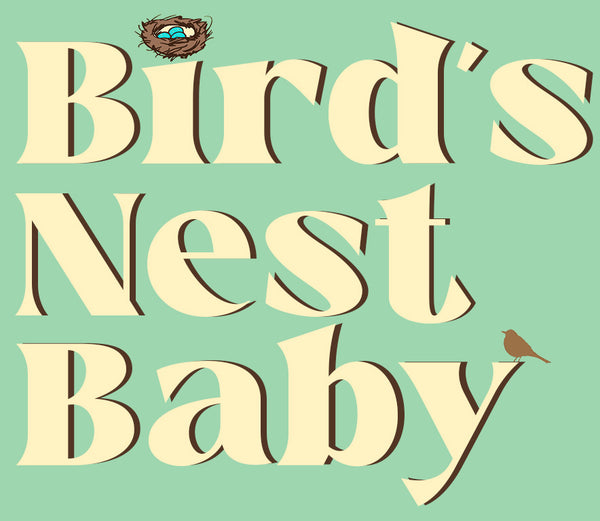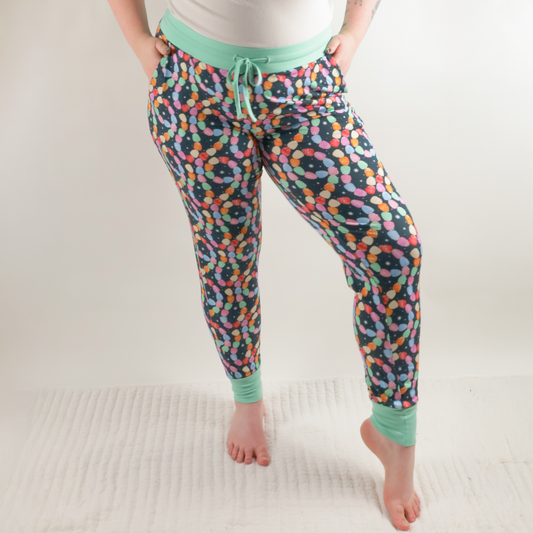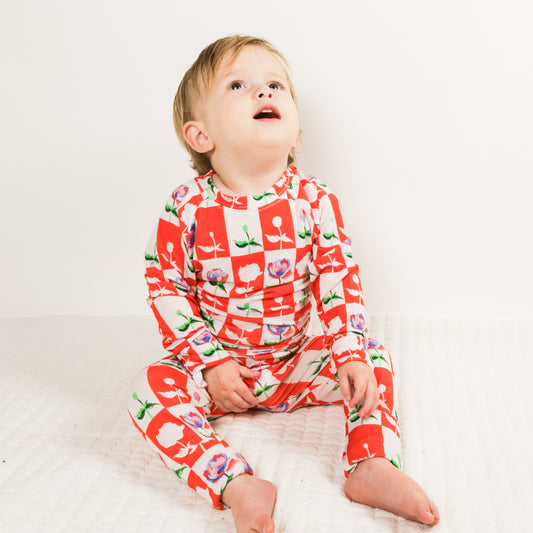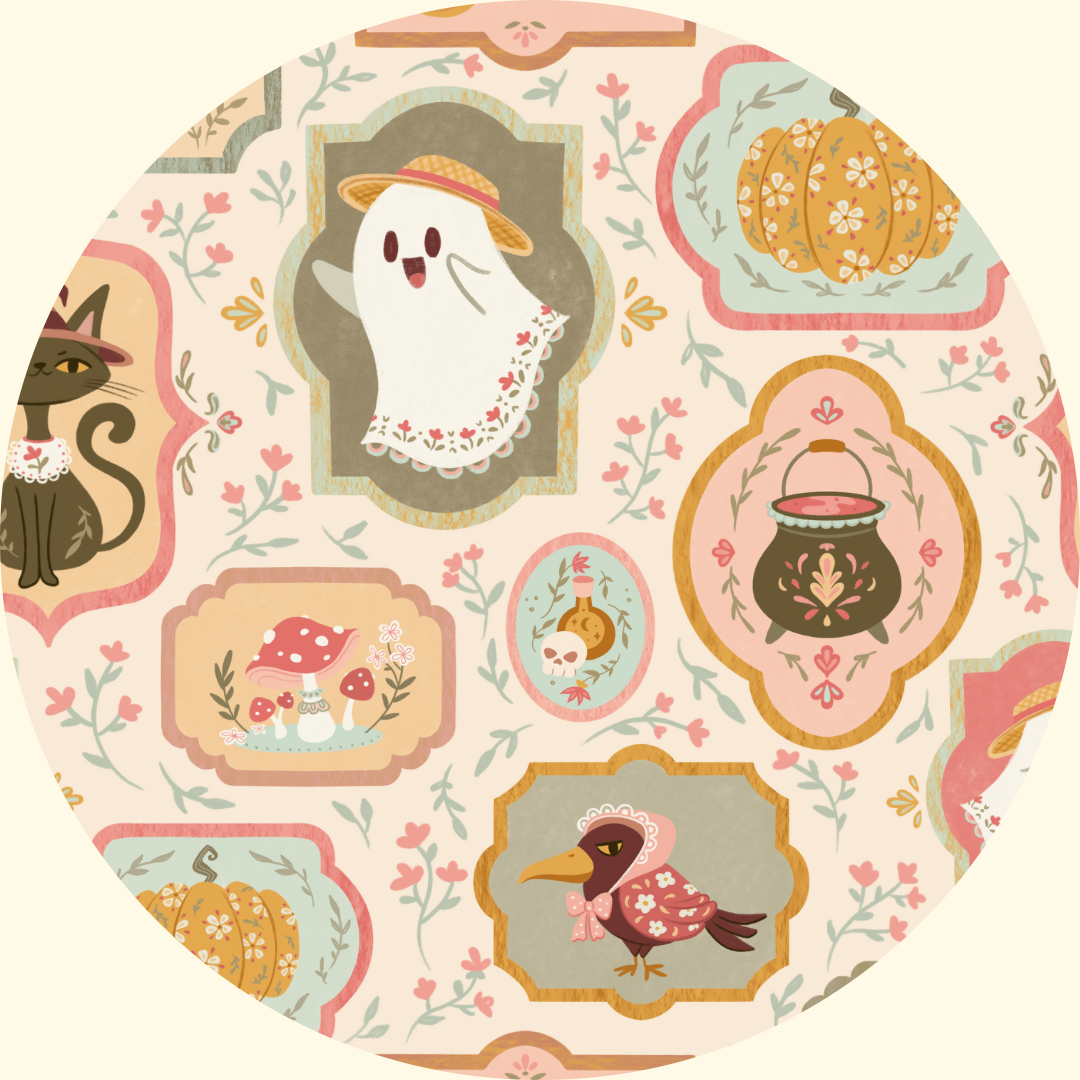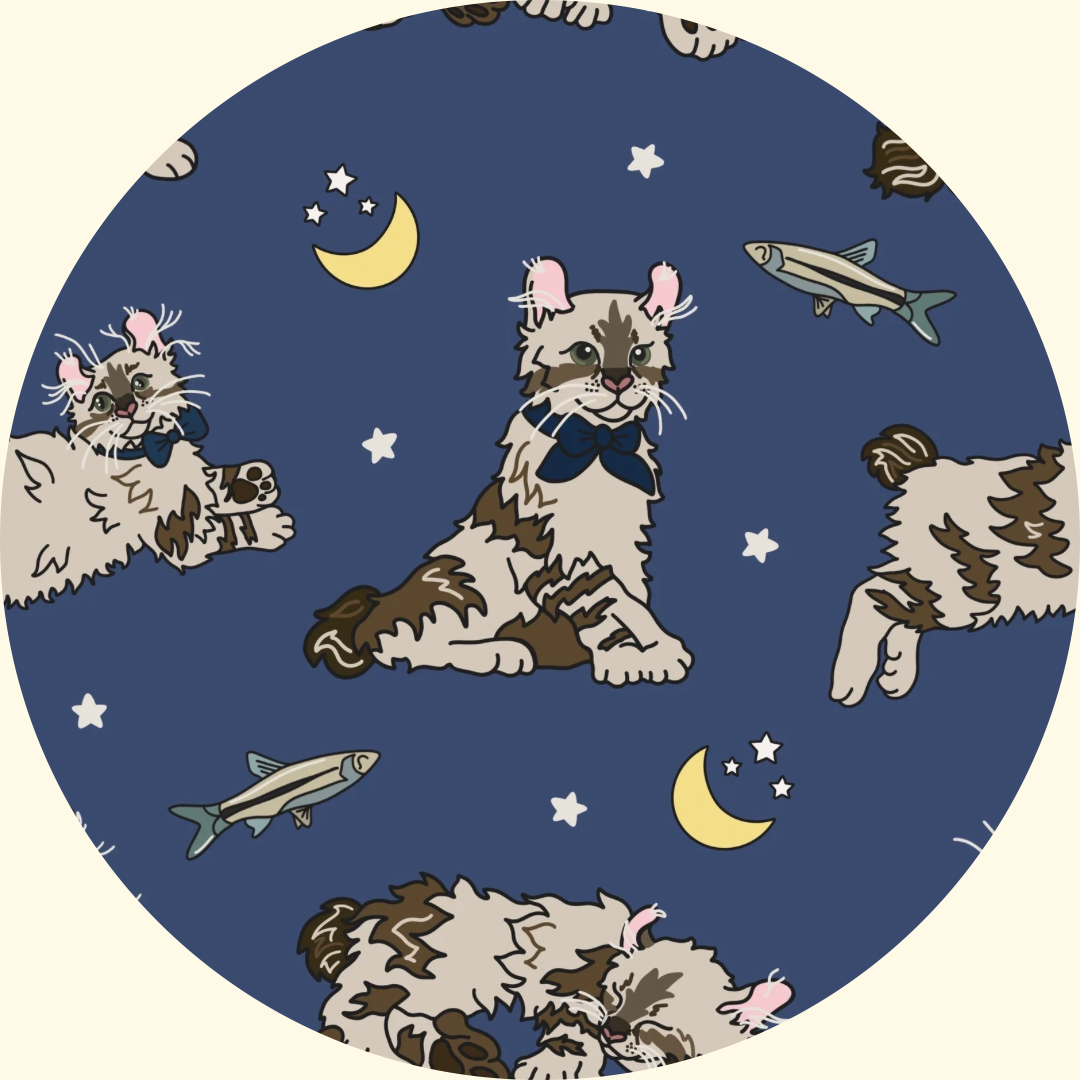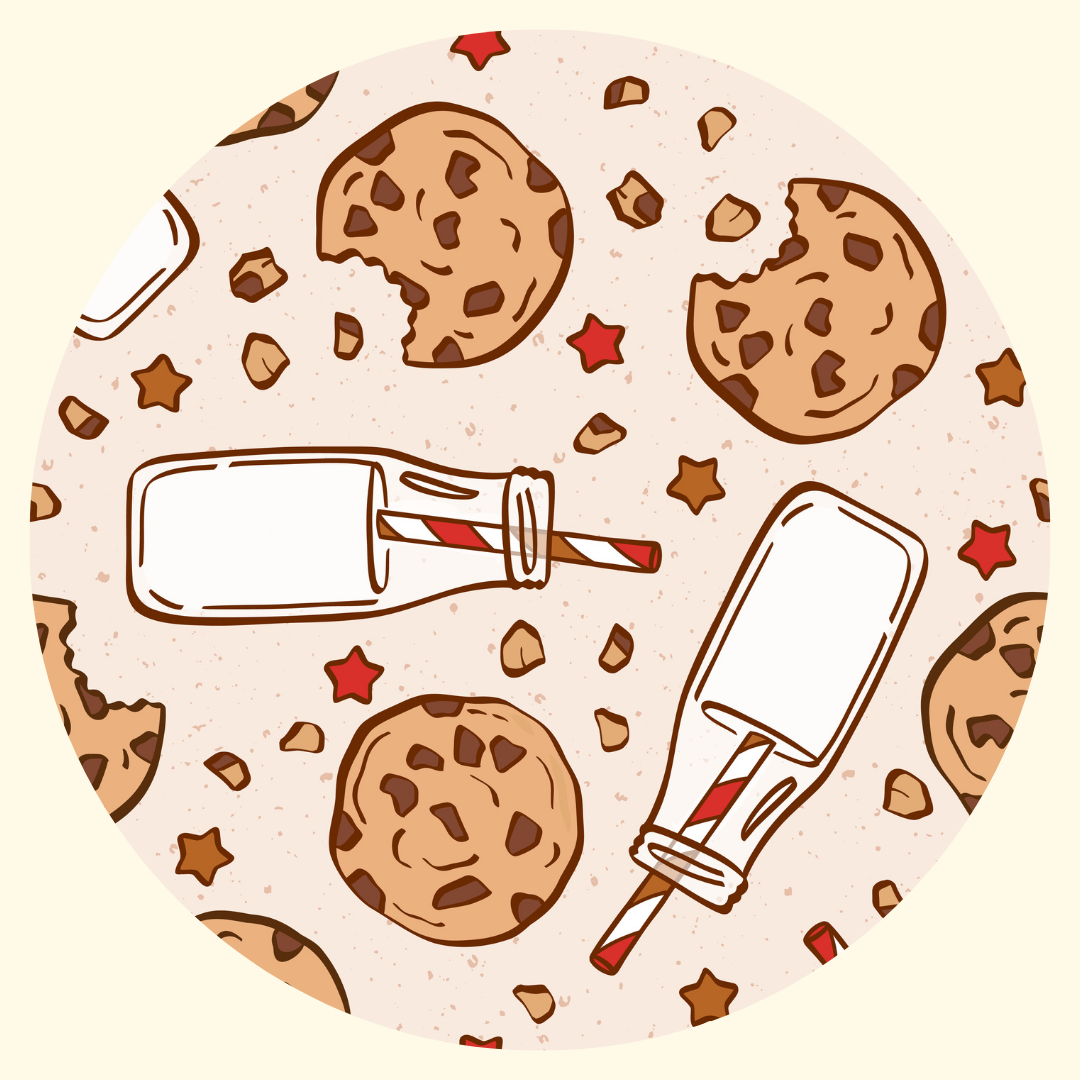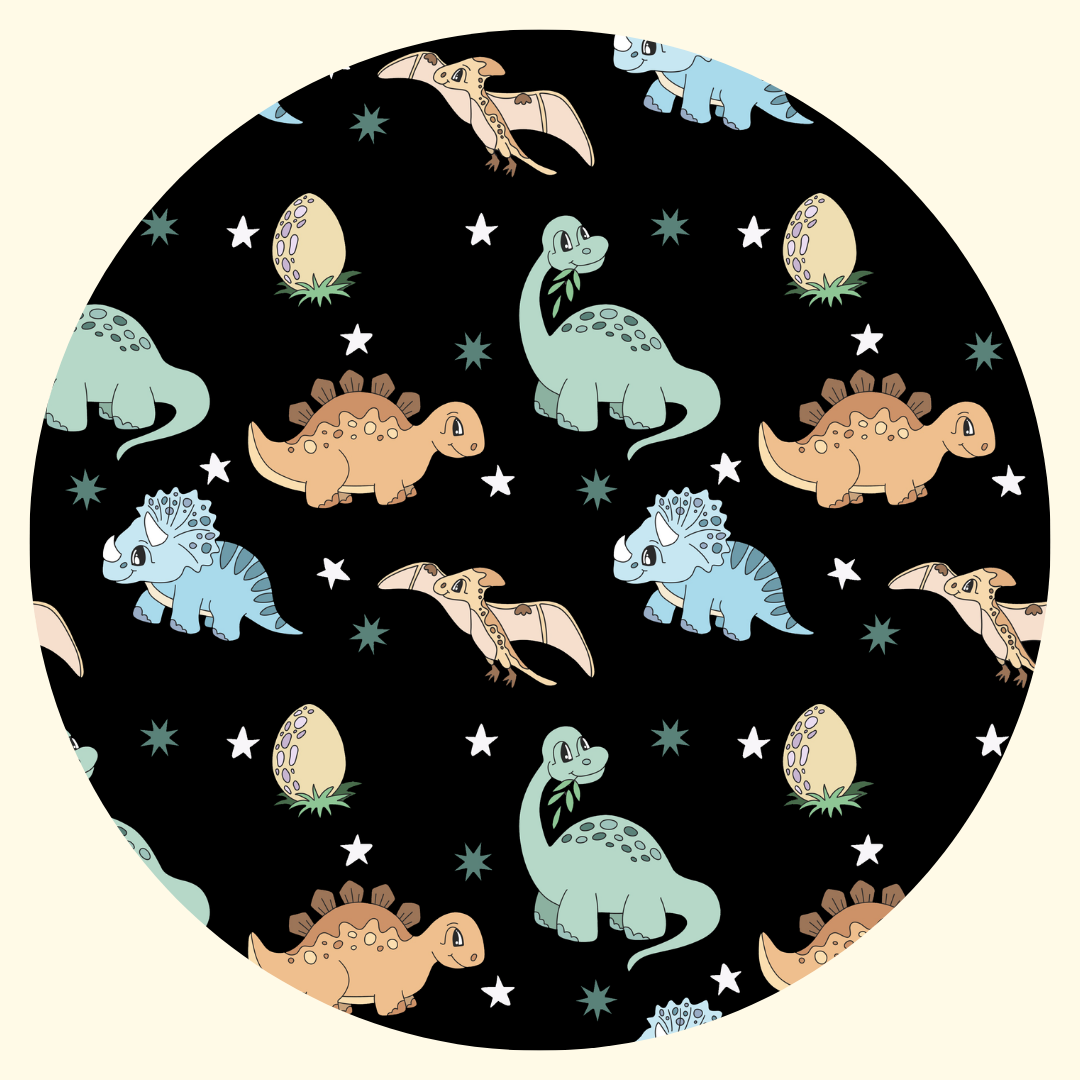Why TENCEL™ Lyocell?
Well, that’s a big question to answer. And I promise I will give you the long answer below. But for those of you who have their hands full and can’t read this full entry and just want the cute clothes ordered, here’s the short answer: it’s better than bamboo. Better for your babe, for you, for the people making it, and for the planet.
When I first thought of the company I wanted to create, I wanted sustainability, ease, and cute prints. I immediately went to viscose from bamboo, popularly referred to as just “bamboo,” or bamboo rayon. It’s marketed as sustainable, I own some, I like it on my baby, and it’s easy to source. There’s already a market of bamboo obsessed parents, and no judgment, I get it! I have shopped drops and waited for my cart to go on sale too. It seemed like a no-brainer! But something kept nagging me about my choice.
It just didn’t feel right. It wasn’t authentic to my vision. So I kept thinking of different fabric options and was really stuck. I wanted breathability, softness, stretch, sustainability and longevity. That’s a lot to ask of one fabric. While I was researching and obsessing over this, I remembered online shopping a while back and seeing a stretchy fabric that mentioned all of these beautiful traits. I went back and found it: TENCEL™ Lyocell. It was the answer I’d been looking for.
What Is It?
So, let’s break it down: what exactly is TENCEL™ Lyocell? Starting with this infographic from Lenzing, the company behind TENCEL™.

As you might have assumed, TENCEL™ is the brand. It’s owned by Lenzing AG, an Austrian company with a focus on sustainability. Then there’s lyocell! In concept, it’s made similarly to rayon. Wood pulp is dissolved, forced through a spinneret and spun into yarn, which becomes fabric! The process differs when we look at what the pulp is dissolved in and how the raw material is sourced. Even the brand, Patagonia, which is known for their efforts in sustainability, recommends lyocell over viscose from bamboo (1).
TENCEL™ Lyocell is made from wood, mainly eucalyptus! Wood you believe it?! Specifically, wood from controlled and certified sources, meeting Forest Stewardship Council® (FSC®) and Programme for the Endorsement of Forest Certification (PEFC) standards (2).
When it comes to dissolving the pulp, the solution used is more than 99.8% reused to make more TENCEL™ Lyocell. Even most of the water is recovered. This is vital because the chemicals used are not released into the environment, causing harmful effects to wildlife and people in surrounding communities. The solution used is also nontoxic, so it does not pose health risks to factory works like the more popular material. This is the NMMO (N-methyl-morpholine-N-oxide) process, no gasses or effluents are emitted. This makes solvent way easier to recover and does not use harmful chemicals like alternate fabrics(3,4)! The closed loop system is a game changer.
The Result
As far as the end product goes, it’s super gentle on the skin and even hypoallergenic (5). This is incredibly important for babies and kids with their delicate skin! Even more so if your kiddo has eczema. TENCEL™ Lyocell, and in turn your Bird’s Nest Baby, is silky smooth and feather soft. The fabric has natural moisture-regulating properties, and is moisture-wicking. Because of this, it has enhanced breathability and temperature regulation. Say hello to being cool & dry in the summer and warm & comfy in the winter. These enhanced moisture-wicking powers also make the fabric unfavorable to bacterial growth, especially from odor causing bacteria. Tests have been conducted with the most common odor-causing bacteria and the studies confirm that they show lower growth rates on fabrics made of TENCEL™ Lyocell fibers, in comparison to other fabric, including viscose (6).
TENCEL™ Lyocell by itself is not stretchy, but our signature 95% TENCEL™ Lyocell 5% spandex blend is super stretchy. This not only provides a comfortable, adaptive fit, but also longevity to ensure your Bird’s Nest Baby grows with your little one for as long as possible. Our fabric is resilient. TENCEL™ Lyocell fibers are durable, have long-lasting quality, and high tenacity, meaning high strength and tear resistance.
Some more quick highlights: TENCEL™ Lyocell's carbon emissions and water consumption are at least 50% lower compared to generic lyocell. You’re helping the planet by choosing lyocell over bamboo! TENCEL™ Lyocell fibers are certified with the widely recognized EU Ecolabel for textile products. This label is awarded to products that meet high environmental standards. Key criteria for evaluation include production processes, limiting the usage of substances harmful to human health or the environment, and minimizing key environmental impacts. It’s also earned the United States Department of Agriculture (USDA) BioPreferred® designation, the fibers themself are Standard 100 by OEKO Tex certified (7).
The beauty of having TENCEL™ branded lyocell, is that it’s held to the highest standards and there is supply chain traceability. Our products are certified throughout the supply chain and we are a certified supplier.
Our Product
So, why do our care instructions recommend tumble drying low OR hang drying? Longevity. For almost any piece of clothing, it’s better to air dry. It will increase its lifespan. I recommend that for your Bird’s Nest Baby items so that they last for your babe, future babes or blankets, or whatever you want to turn them into! I personally do dry my BNB items occasionally. We’re parents, there is going to be a time where we forget to do laundry until 30 minutes before bedtime, or we simply prefer using the dryer. Do what fits your life better!
This isn’t just marketing and generic facts, I really do love and prefer this fabric to anything else I’ve put on my baby. It’s super easy to get her legs in and out for diaper changes, she stays dry and comfortable all day. Spit up does not bother her on the fabric, or a little leaked milk (and trust me, that happens a lot). I’ve felt it both inside and out when this happens and it really is moisture-wicking. If you’ve made it this far, thank you for sticking with me! If this digest on TENCEL™ Lyocell wasn’t enough for you, please read the linked articles!
In summary, our fabric is amazing, if you give it a shot, I bet you and your little one will love it too.
Resouces
1. Patagonia. (2012). Bamboo and rayon. The Footprint Chronicles. https://www.patagonia.com/on/demandware.static/Sites-patagonia-us-Site/Library-Sites-PatagoniaShared/en_US/PDF-US/bamboo_rayon.pdf [accessed 10 Mar 2024]
2. Lenzing. (2022). Sustainable Sourcing of Wood and Dissolving Wood Pulp. Lenzing Sustainability Report 2022. https://reports.lenzing.com/sustainability-report/2022/material-aspects/raw-material-security/sustainable-sourcing-of-wood-and-dissolving-wood-pulp.html [accessed 10 Mar 2024]
3. Sciennce Direct. N-Methylmorpholine N-Oxide. https://www.sciencedirect.com/topics/chemistry/n-methylmorpholine-n-oxide [accessed 10 Mar 2024]
4. Good On You. (2023). Material Guide: What Is TENCEL Lyocell? And Is It Sustainable? How Ethical is Tencel. https://goodonyou.eco/how-ethical-is-tencel/ [accessed 10 Mar 2024]
5. Achoo Allergy. (2022). What is Tencel™? https://www.achooallergy.com/blog/what-is-tencel/ [accessed 10 Mar 2024]
6. Journal of Applied Microbiology. (2009).Material-dependent growth of human skin bacteria on textiles investigated using challenge tests and DNA genotyping. https://www.tencel.com/images/assets/claims/document/claim-proof-odor-material-dependent-growth-of-human-skin-bacteria.pdf[ accessed 10 Mar 2024]
Shop Now
-
Adult Joggers - Gumdrop Grumbles
Regular price $42.00 USDRegular priceUnit price / per$42.00 USDSale price $42.00 USD -
Donation Pair of PJs
Regular price $38.00 USDRegular priceUnit price / per -
Lounge Set - Love Train
Regular price $38.00 USDRegular priceUnit price / per$38.00 USDSale price $38.00 USD -
Lounge Set - Let It Grow
Regular price $38.00 USDRegular priceUnit price / per$38.00 USDSale price $38.00 USD
Prints made for memories
-

A Gingham Good Time
Looking for a timeless print that celebrates all things fall? Look no...
